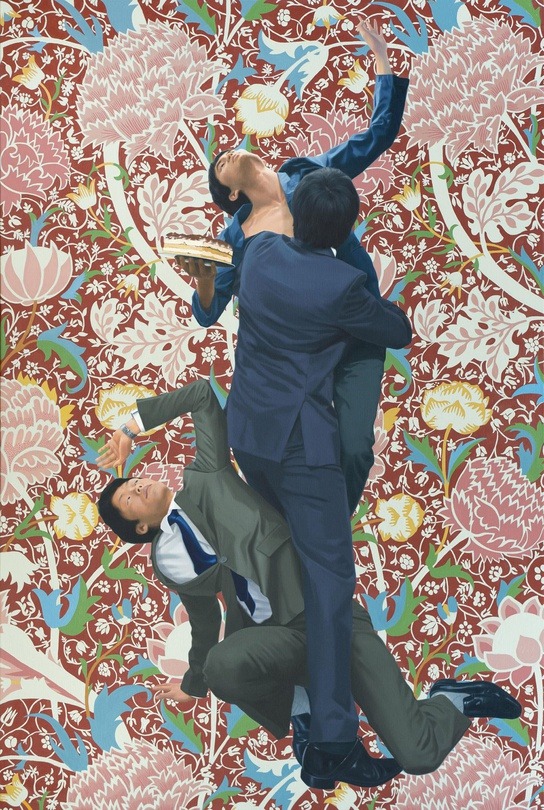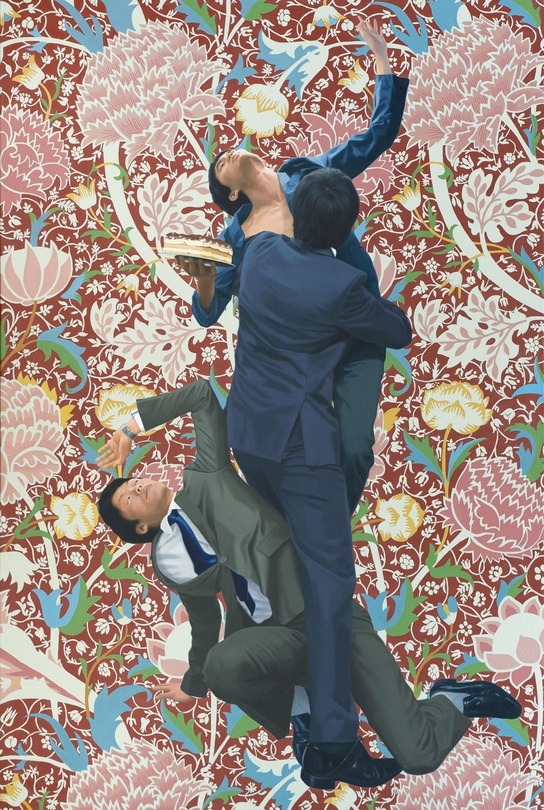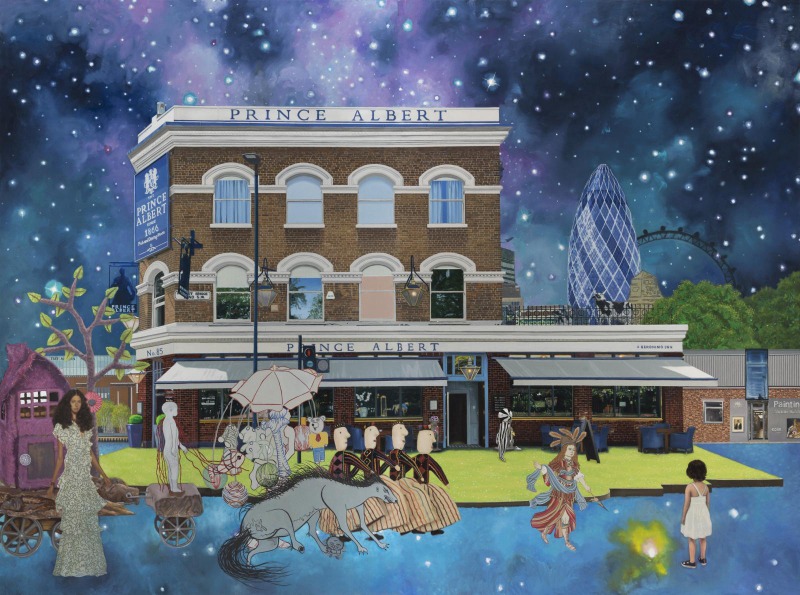
| Period| | 2021.05.06 - 2021.06.05 |
|---|---|
| Operating hours| | 09:00 - 18:00 |
| Space| | Gallery LVS/Seoul |
| Address| | 33, Dosan-daero 27-gil, Gangnam-gu, Seoul, Republic of Korea |
| Closed| | Sun, Holidays |
| Price| | Free |
| Phone| | 02-3443-7475 |
| Web site| | 홈페이지 바로가기 |
| Artist| |
김성국
|
정보수정요청



|
|
Exhibition Information




<The Storyteller : Solo exhibition of Kim Sung Kook> Park Kyoung-Rin I start my journey by going back in time, awaking memories of an ancient European castle. Lights flutter on the cold granite ramparts. Hearing a whispering singing from somewhere, I follow the sound that fills the empty space and open the thick wooden door. Among a small herd of audience, a minstrel plays a small harp, singing a song of ballad, legend, hero’s adventure and sad love story that handed down from old times by word of mouth. I close my eyes for a while to the soft sound. How much time has passed? I open my closed eyes at a strange feeling. I become stunned for a moment by the bright light that pours in. Time returns to the present from the past. I look up at the wall with my eyes now adapted to light, where there is a large canvas full of colors. I follow the story in the picture, examining the background of a character who seems to lead the play. The stories, mingled from Britain and Korea, past and present, and fiction and reality call the attention. The first work that catches my eyes is the <Stardust>(2021). This work, which title means both an enchanting power and a cluster of tiny stars, guides us to a place filled with the memories of the artist at the time in Britain. Kim staged the place where her memories with her friends reside, sharing sorrow and joy or some tedious daily lives when attending the Royal College of Art in London. There, all the emotion of joy and anger, sorrow and happiness flowed into the memories of time. The stage of the <Stardust> is a small pub located in the most realistic and most British neighbourhood, between the City Hall and London Eye, the must-visit itineraries for tourists. The characters on the stage, however, are not so ordinary: There go the characters that seemed to pop out from a medieval painting, the cheerful dancers in fairy tales, the creations from the artist’s pure imagination, or the characters from childhood cartoons. The stars, pouring into the sky, illuminate the ecstasy of this very moment, but, at the same time, function as a pictorial device to remind us that this is not a reality. The one who watches this entire scene is a little child who may have been around four or five years old. The child refers to the artist’s persona and simultaneously, to the viewers who are looking at this painting. The scenery of the enchanted moment comes closer and quickly disappears like a midsummer night’s dream. The uniqueness of the story that the artist delivers, starts from the synergistic images that rooted in different cultural context of the East and West. In order for a symbol to function as a language, it calls for a premise of a tacit agreement between the storyteller and the listener about the symbols in the specific customs and traditions of a particular culture. The intrinsic meaning of the symbol is revealed only when the mutual understanding is assumed. Different cultural elements of the East and West appear in one scene bring a strange heterogeneity to both sides. Such elements are most intuitively unravelled in the scene of the <Office workers’ Birthday Party 3>(2021). The characters of typical Korean office workers borrowed the motives from the most British, William Morris’ pattern and from the ancient Greek-Rome sculpture of a battle between Hercules and the son of the god of the earth. It metaphorically captured the aspects of office workers, neither winners nor losers in society, releasing stress on a special day. <Leviathan>(2018), named after Thomas Hobbes’ book published in England in 1651, answers the question upon the conditions of happiness. The three ladies embracing each other in the centre of the canvas, are the colleagues of the artist at university. Of different nationalities, three ladies always went together and enjoyed their younger days. The three wolves in front of the ladies symbolize the work and duties they had to do at university. Such experiences imply that in their future, they can be both powerful companions or enemies at the same time. A man wearing a beret at the back is a means(device?) that protects and controls the vulnerable youth from dissipation. Contrary to Hobbes’ idea of ‘the war of all against all’, the artist imagined a more peaceful and less competitive society, while each of the character in the scene implies the meaning of their own. As such, Kim Sung-Kook’s paintings are like novels created with image. The image connotates allegory that creates story. The artist compares herself as a painter to a minstrel of the Middle Ages, roaming from town to town, city to city, enhancing the oral narrative, adding fantasy to ordinary days, and transforming life into something full of adventure and passion. She mythises the lives of others, making the most common stories into a legend. The story does not end all night. Just as it is the minstrel’s destiny to continue the story, it would be the artist’s destiny to carry on the story endlessly through her paintings. Among the symbols like a riddle made from colours and images, the story is conveyed through her paintings and leads us to an enchanted moment from the current reality.
